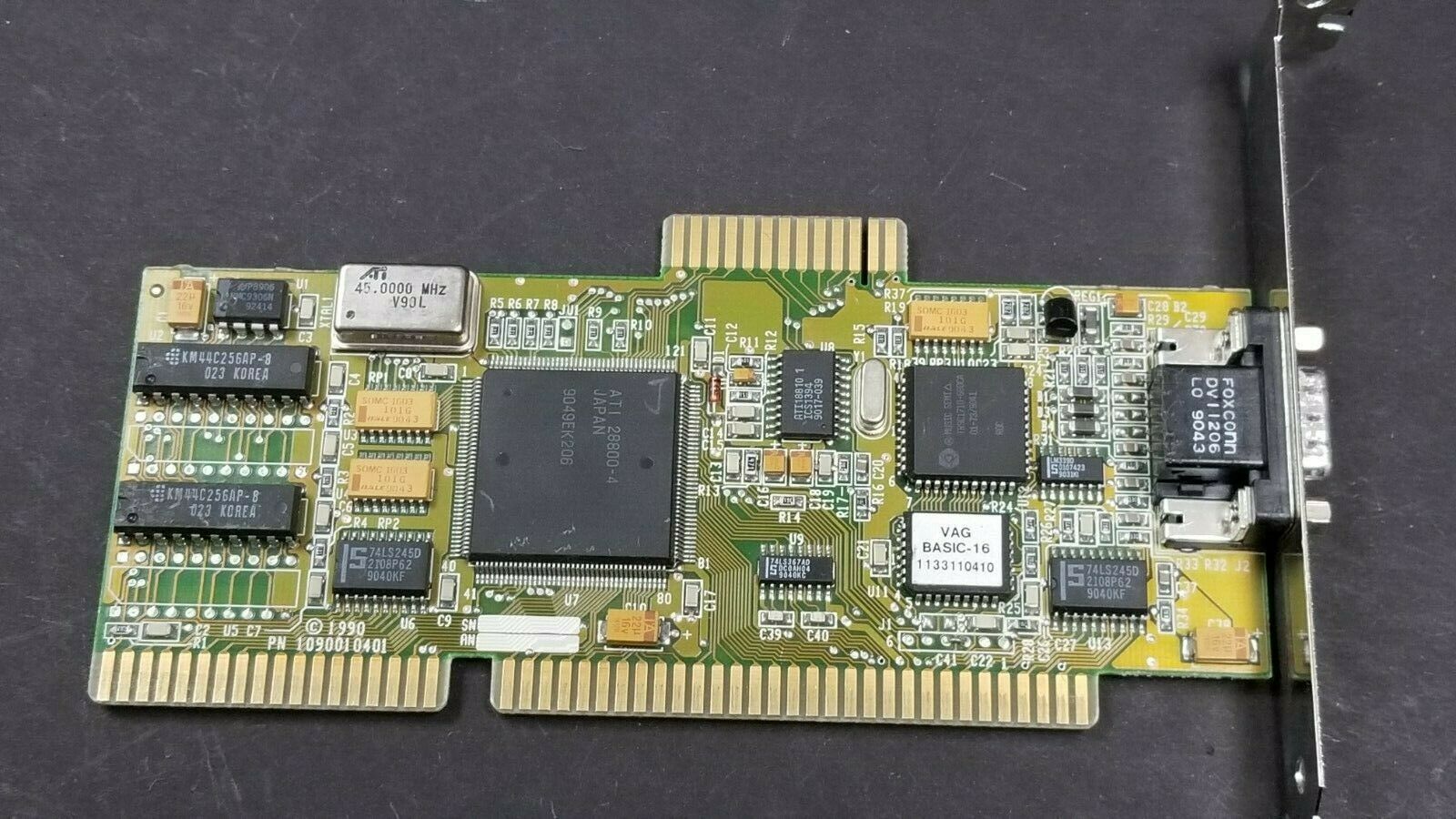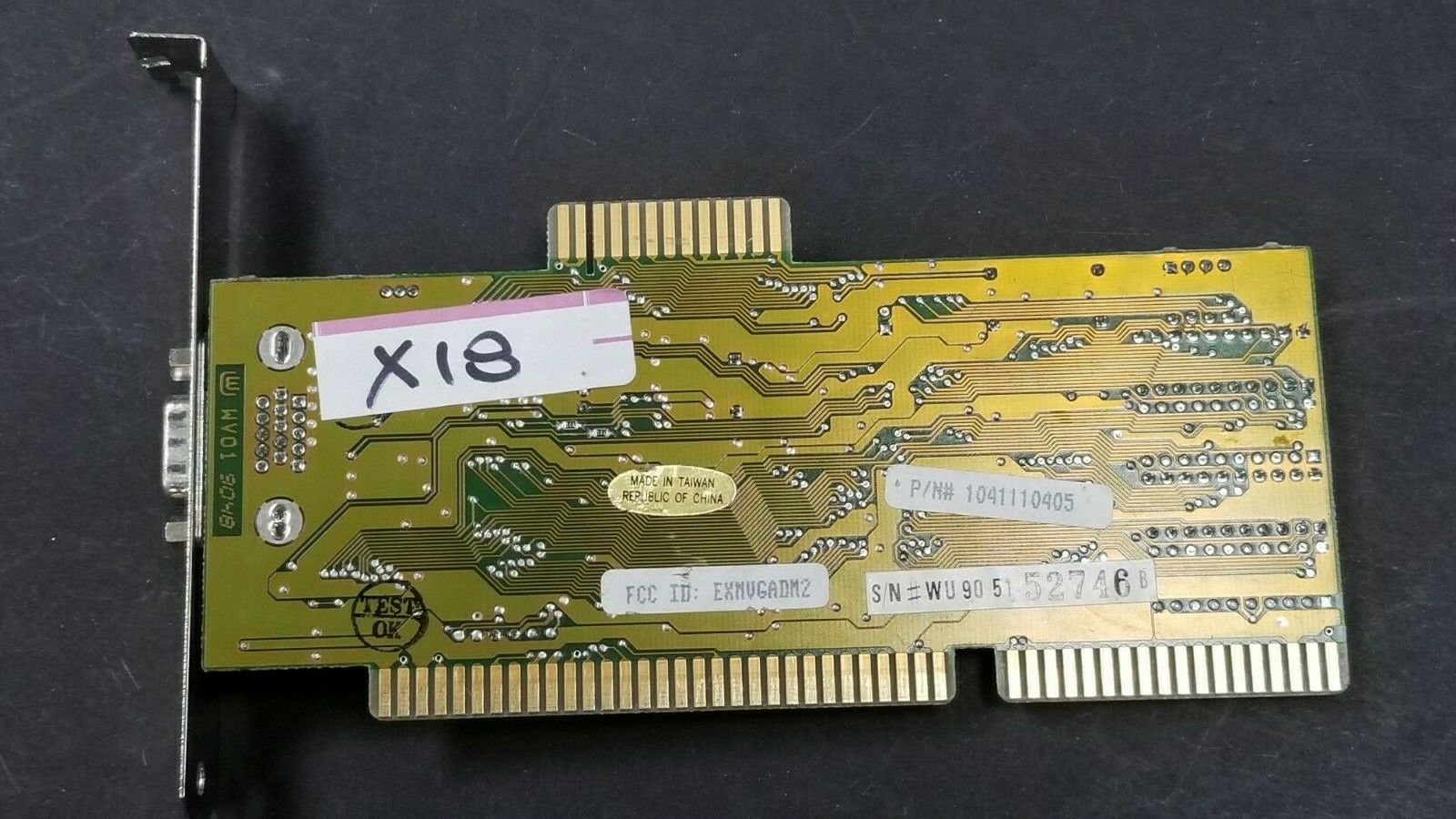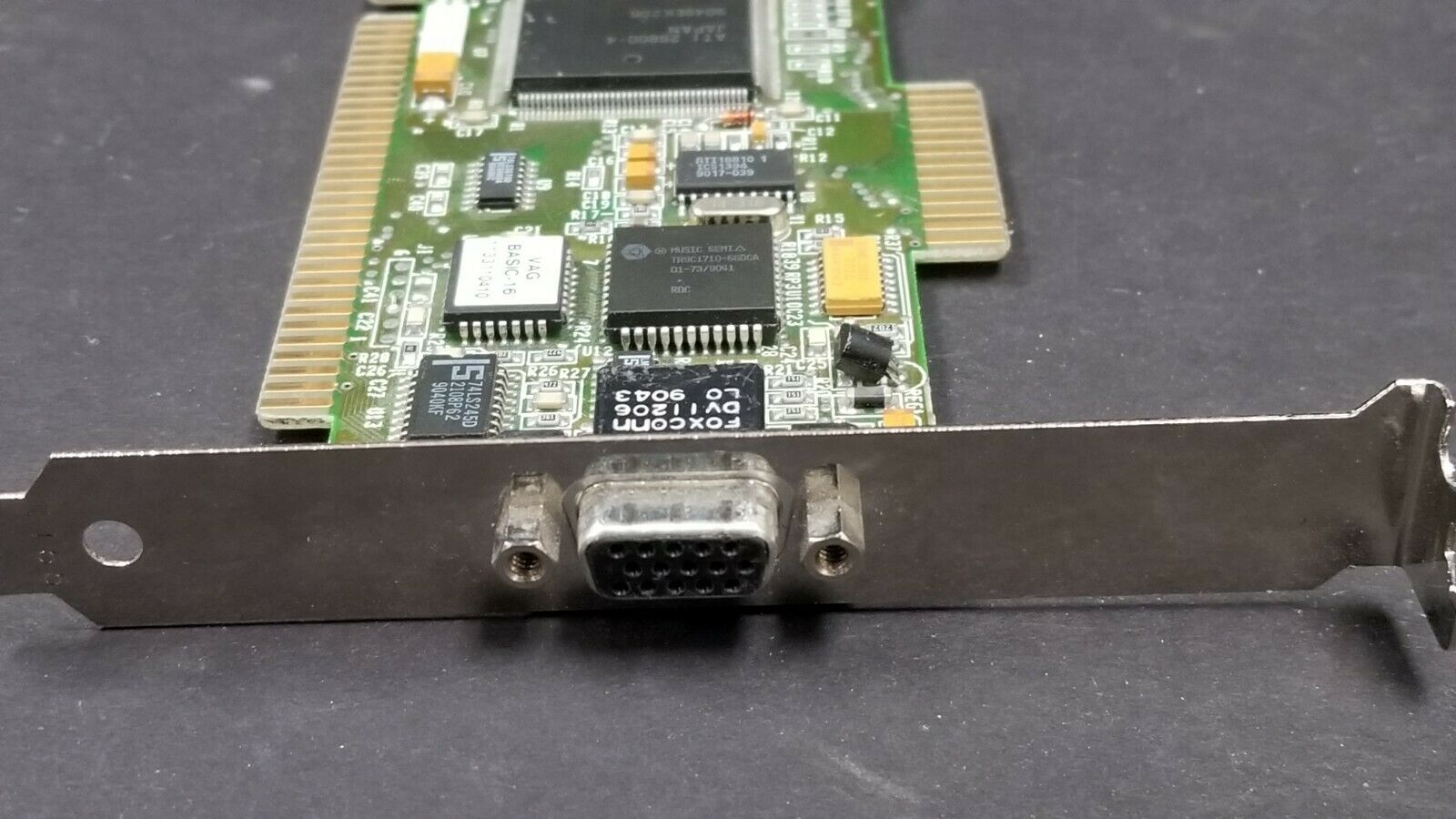ATI VGA Wonder+ and VGA Basic-16
1990 saw the release of the VGA Wonder+, the first to use ATI's new 2nd-generation graphics chip, the 28800. The key difference was its ability to address up to 1 MB of video memory.
At launch, their new ATI28800 chipset claimed to offer speeds rivalling VRAM-based cards. With dual page mode memory access and dynamic CPU/CRT interleaving.
The RAMDAC was still external on this 2nd-generation, and the VGA Wonder+ used the Triad Semiconductor TR9C1710 that ran at 65 MHz as the VGA Wonder 16 series (VGA Wonder 256 and VGA Wonder 512) as well as the ATI18810-1 (a relabelled ICS1394) dot clock generator.
The VGA Basic-16 was a cut-down version of the VGA Wonder+ with no bus mouse port.
The VGA Wonder+ shared its BIOS code with other 28800 cards, including the VGA Basic-16, VGA Edge-8, VGA Edge-16 and VGA Integra, so these are interchangeable.
Board Revisions
No details are known on different revision of this card.
Competition
The VGA Wonder+
In the Media
Speed gains come from page-mode memory access, dynamic CPU/CRT interleaving, and extensive buffering, according to Quan.
New display options include a non-interlaced 1,024 by 768 mode, an 800 by 600 interlaced mode specifically for IBM 8514 monitors, and 132-column support for all monitors.
Scheduled to ship June 15, the VGA Wonder+ costs $379 for 256K and $479 for 512K models."
InfoWorld, June 1990
Setting it Up
No configuration is required for the VGA Wonder+, with its auto-switching capability. The card came with a utility to force the display mode if necessary.
Downloads
Operation Manual Get in touch if you can provide this missing item! |
Original Utility Disk Get in touch if you can provide this missing item! |
VGA BIOS ROM Get in touch if you can provide this missing item! |
DOS Drivers ATI VGA Wonder Series drivers for DOS. Includes utilities, a VESA driver, a mouse driver and software drivers for WordStar 3.31, 4.0 and 5.0, WordPerfect 4.1, 4.2, and 5.0. |
Windows 3.1 Drivers ATI VGA Wonder Series drivers for Windows 3.1. |
More Pictures
.png)


